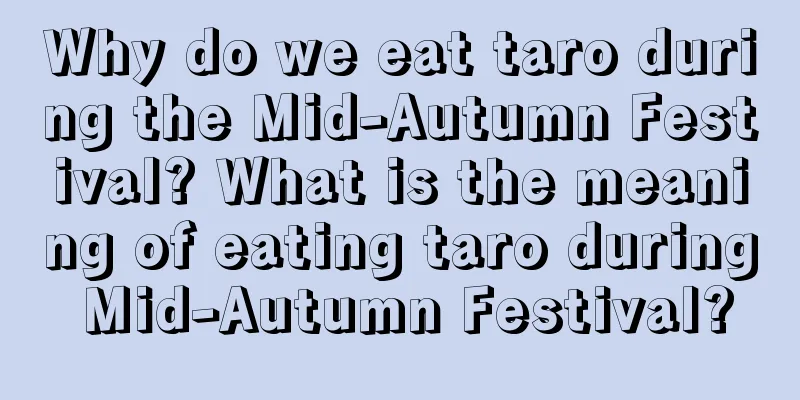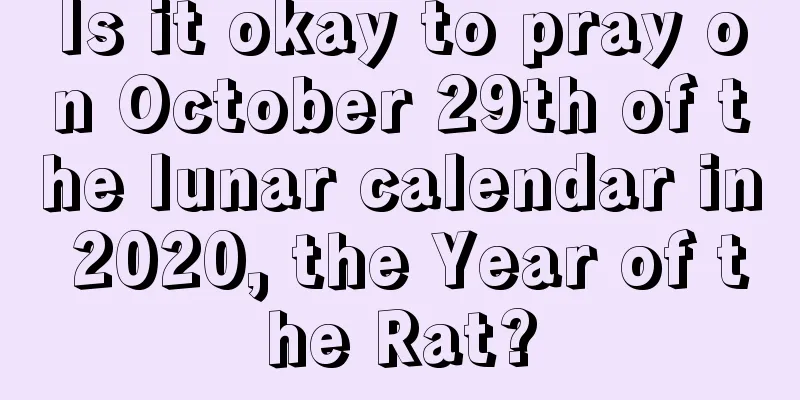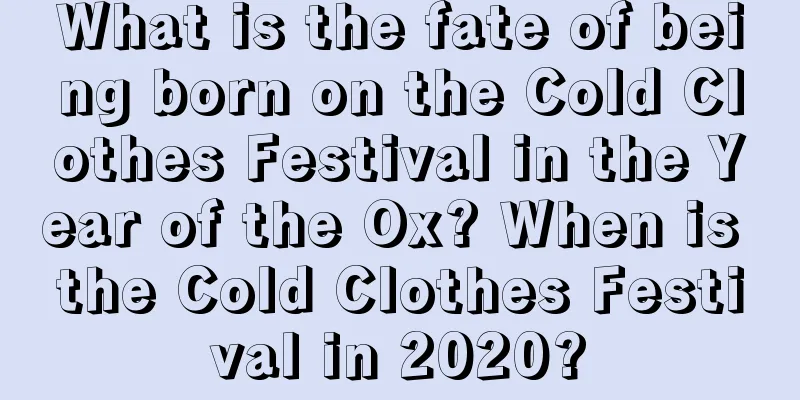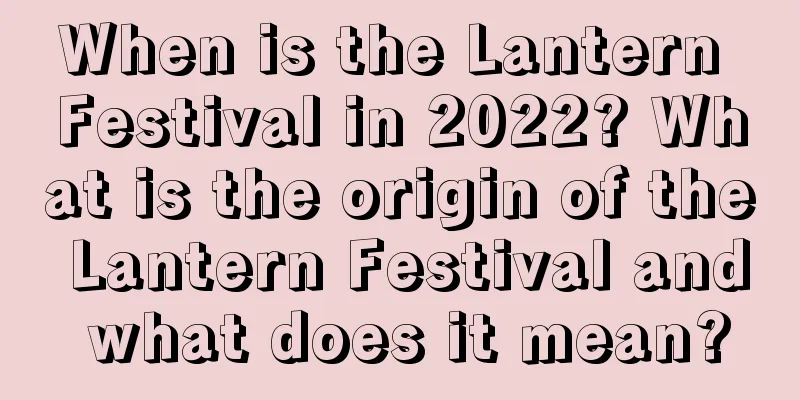Why do we eat taro during the Mid-Autumn Festival? What is the meaning of eating taro during Mid-Autumn Festival?

Introduction: Our country is a typical traditional country, and many customs have been nurtured in this context. Eating taro during the Mid-Autumn Festival is one of them. So why do we eat taro during the Mid-Autumn Festival? What is the meaning of eating taro during Mid-Autumn Festival? The Mid-Autumn Festival on August 15 is an important traditional festival for Chinese people. Therefore, the editor of Fortune Teller.com has specially compiled articles related to the Mid-Autumn Festival for you. Come and check it out!Why do we eat taro during the Mid-Autumn Festival? What is the meaning of eating taro during Mid-Autumn Festival?Eating taro during the Mid-Autumn Festival is a long-standing custom, but the meaning of eating taro during the Mid-Autumn Festival varies from place to place. In the north, taro is a common offering to the god of land. In rural areas of the north, rice and millet are harvested only once a year in autumn. When the autumn harvest season comes, people look at the harvest of a year's hard work and believe that it is the land god and their ancestors who are secretly blessing them.At the same time, the 15th day of the eighth lunar month, which is the time of autumn harvest, is the birthday of the God of Land. Therefore, people offer taro as one of the sacrifices when they worship the god on this day. The general practice is to cook the whole taro and put it on a plate, or put rice flour taro in a large bowl and place it on the altar to thank the God of Land. In the south, eating taro during the Mid-Autumn Festival is meant to ward off evil and eliminate disasters. The "Chaozhou Prefecture Records" of the Qianlong Year of the Qing Dynasty said: "Enjoying the moon on Mid-Autumn Festival and peeling taro to eat is called peeling ghost skin." It is said that using taro during the Mid-Autumn Festival is to commemorate the historical story of the Han people killing the Tartars in the late Yuan Dynasty. When the Han people revolted and overthrew the tyrannical rule of the Mongols in the Yuan Dynasty, it was on the night of August 15th. After killing the Tartar rebels, the Han people offered their heads to the moon. Later, of course, it was impossible to offer human heads to the moon during the Mid-Autumn Festival every year, so taro was used instead. To this day, in some places, peeling the taro skin when eating taro during the Mid-Autumn Festival is called "peeling the ghost skin." There is another saying about eating taro during the Mid-Autumn Festival. It is said that during the Ming Dynasty, late at night on the Mid-Autumn Festival, the enemy took the opportunity to launch a surprise attack and besieged Qi Jiguang, a famous general who fought against the Japanese invaders, and others on the mountain. After the food supply was cut off, the soldiers had to dig wild grass to fill their stomachs. At that time, they also dug up a lot of wild taro, which tasted delicious, but they didn’t know what it was called. So in order to commemorate the soldiers who died, they called it "Yu Nan". Later, Qi's army successfully broke through, and the people along the southeastern coastal areas would eat "Yu Nan" every Mid-Autumn Festival to commemorate Qi Jiguang's achievements in fighting the enemy. Because "yunan" (meaning "survival" in Chinese) sounds similar to "taro" (meaning taro), people called it "taro", and the custom of eating taro during the Mid-Autumn Festival in the South has been passed down. So can taro really ward off evil and eliminate disasters? From the perspective of preventing and controlling diseases and disasters, it does make some sense. Chinese medicine believes that taro is sweet and spicy, and neutral in nature, and belongs to the intestines and stomach meridians. It has the effects of benefiting the stomach and intestines, relieving constipation and detoxification, nourishing the liver and kidneys, reducing swelling and relieving pain, dispersing nodules, resolving phlegm, and replenishing essence and marrow. Modern medical research has found that taro is rich in protein, calcium, phosphorus, iron, potassium, magnesium and other ingredients. Among the minerals it contains, the fluoride content is relatively high, which has the functions of cleaning teeth, preventing caries and protecting teeth. Taro is rich in nutrients and can enhance the body's immune function. When a person's immunity is enhanced, of course, he will be less likely to get sick. This to some extent verifies the ancient saying that "eating taro can prevent diseases, ward off evil spirits and eliminate disasters." Summary: Through the above article content, we know about [Why do we eat taro during the Mid-Autumn Festival? What is the meaning of eating taro during Mid-Autumn Festival? 】I hope this analysis of the problem can help everyone! |
Recommend
Is it appropriate to raise the beam on the sixth day of the fifth lunar month, the day after the Dragon Boat Festival in 2020? Can't say "Happy Dragon Boat Festival"
Introduction: Generally, an auspicious day is requ...
Will there be a 3-day holiday for New Year's Day 2019? How to adjust the New Year’s Day holiday?
Will there be a 3-day holiday for New Year's D...
Is June 17th of the lunar calendar in 2020 a good day?
The lotus leaf skirt is cut in one color, with hi...
Is December 19th of the lunar calendar in 2020 an auspicious day for signing a contract?
Is December 19th of the lunar calendar in 2020 an ...
Is August 13th of the lunar calendar in 2017 a suitable date for opening a new store or company?
August is a wonderful month because it has the be...
Is the first day of the sixth lunar month in 2021 suitable for caesarean section? Is it a good day?
The entire month of June in the lunar calendar of ...
Is it possible to get married during the Winter Solstice in 2017? What are the customs of the Winter Solstice?
Marriage is a major event in life. Therefore, in o...
Analysis of the position of the God of Wealth on the Cold Dew Festival on August 22, 2020 in the lunar calendar!
Almost every household worships gods and Buddhas t...
Is it a good idea to move on Father’s Day 2018? When is Father's Day 2018?
Introduction: Father's Day is on the third Sun...
Is it possible to offer sacrifices on the seventh day of the fourth lunar month in 2018?
Sacrifice is an important part of our country'...
February 18, 2021 Rainwater decoration auspicious or unlucky Rainwater start time 2021
Introduction: In our traditional civil activities,...
What are the do's and don'ts on the third day of the tenth lunar month in 2018?
Every day has its good and bad days, auspicious a...
Is it auspicious to open a business the day after Xiaoxue in 2019? What does Xiaoxue mean?
Introduction: Generally, it is necessary to choose...
What are the customs and traditions of Dahan and what is its origin?
In ancient times, the Great Cold was divided into ...
Is it okay to get the certificate on June 6, the day after Grain in Ear in 2020? What does Grain in Ear phenology refer to?
Introduction: According to tradition, an auspiciou...









